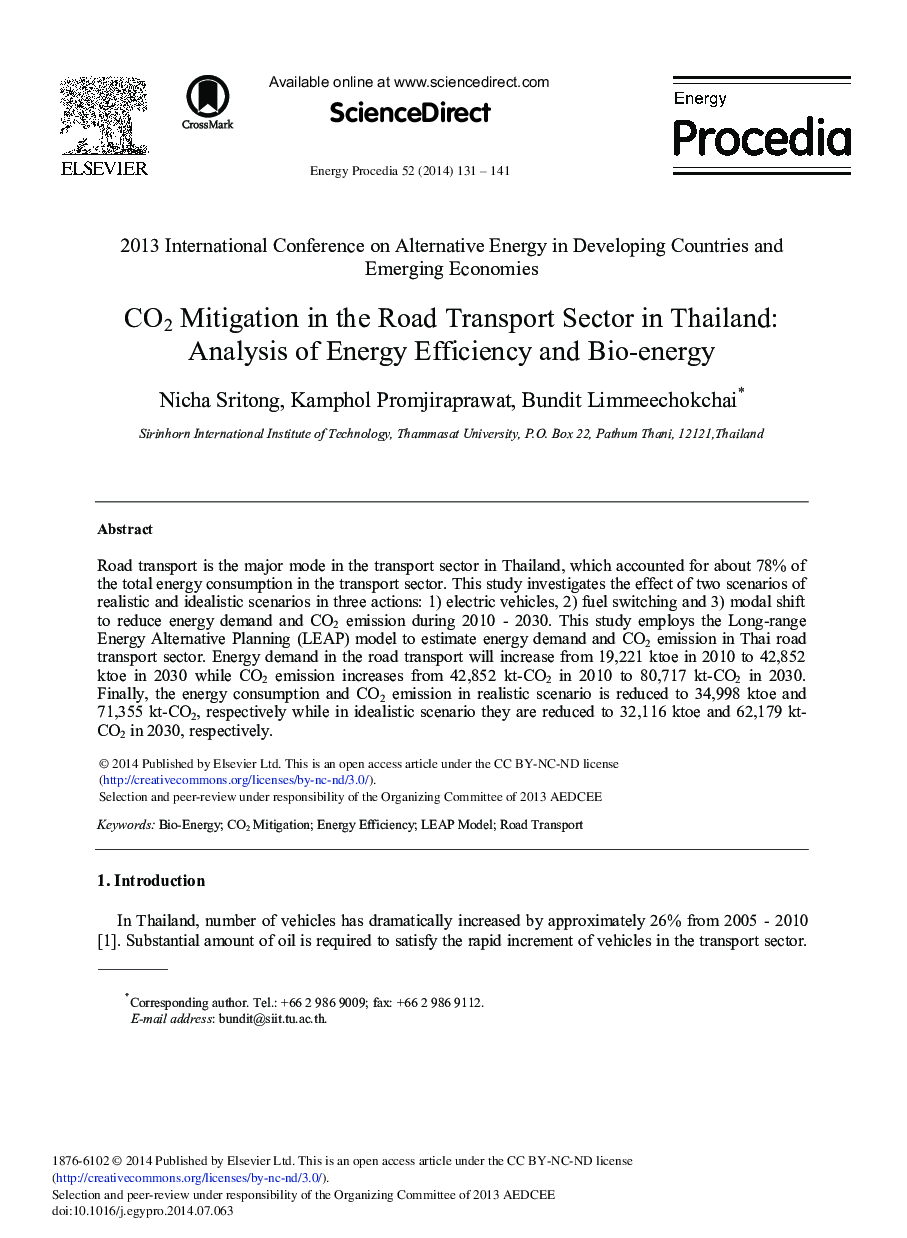| کد مقاله | کد نشریه | سال انتشار | مقاله انگلیسی | نسخه تمام متن |
|---|---|---|---|---|
| 1511267 | 1511183 | 2014 | 11 صفحه PDF | دانلود رایگان |

Road transport is the major mode in the transport sector in Thailand, which accounted for about 78% of the total energy consumption in the transport sector. This study investigates the effect of two scenarios of realistic and idealistic scenarios in three actions: 1) electric vehicles, 2) fuel switching and 3) modal shift to reduce energy demand and CO2 emission during 2010 - 2030. This study employs the Long-range Energy Alternative Planning (LEAP) model to estimate energy demand and CO2 emission in Thai road transport sector. Energy demand in the road transport will increase from 19,221 ktoe in 2010 to 42,852 ktoe in 2030 while CO2 emission increases from 42,852 kt-CO2 in 2010 to 80,717 kt-CO2 in 2030. Finally, the energy consumption and CO2 emission in realistic scenario is reduced to 34,998 ktoe and 71,355 kt-CO2, respectively while in idealistic scenario they are reduced to 32,116 ktoe and 62,179 kt-CO2 in 2030, respectively.
Journal: Energy Procedia - Volume 52, 2014, Pages 131-141